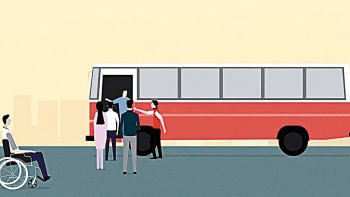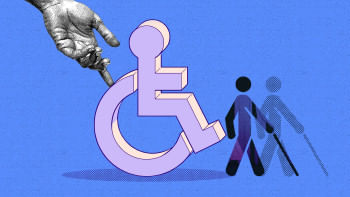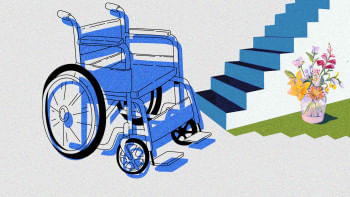Stop systemic exclusion of women with disabilities

We are alarmed by the stark realities revealed at a recent seminar on the lack of rights and services available to women with disabilities in Bangladesh. Experts at the event, held at The Daily Star Centre on Thursday, highlighted how marginalised and excluded these women remain across multiple sectors, including education, training, employment, healthcare, social participation, policy and funding, legal access, etc. The cumulative effect of all these gaps on both the women and the nation in general is profound, underscoring the urgent need for comprehensive interventions.
The problem seems to begin with the underreporting of their numbers, as women with disabilities are not adequately represented in official statistics. This lack of visibility in data leads to a policy blind spot, making it difficult to design targeted interventions or allocate resources for specific needs. This is already evident across the many sectors where women with disabilities consistently lag behind. For instance, while 55 percent of men with disabilities are illiterate, the figure for women rises to 72 percent. Their participation in vocational training is equally dismal. Moreover, only 11.34 percent of such women participate in the labour force. And among those employed, only 3.13 percent work in the formal sector, with the vast majority (96.87 percent) engaged in informal work.
These numbers illustrate the structural barriers that deny them access to even the most basic opportunities for advancement. When it comes to healthcare, the picture is equally troubling, with over 37 percent being deprived of essential care due to poverty, lack of family support, poor infrastructure, privacy concerns, etc. Their gynaecological and reproductive health needs are almost entirely overlooked; even hospital toilets remain largely inaccessible for them. They also face disproportionately high rates of mental, physical and sexual abuse, especially those with intellectual and speech impairments.
These challenges are further exacerbated by systemic exclusions as exemplified by the absence of a specific state-wide protocol or employment policy for them, or that of a dedicated women's disability corner at the National Disability Development Foundation or within the Department of Social Services, which could begin to redress some of the imbalance. Accessing courts also remains a major hurdle, with the legal system not even recording or recognising disability status in court documentation.
We cannot continue to ignore the plight of a community that constitutes about 15 percent of the population. While we welcome the gradual increase in government allowances for persons with disabilities, all such efforts risk becoming token gestures without a strategic, multi-sectoral approach to guide them. We, therefore, urge the government to undertake comprehensive institutional and legal measures to insulate these vulnerable individuals from abuse, exclusion and systemic barriers, so that they can reach their potential like all other citizens. Greater research and funding support for relevant organisations are also crucial.


 For all latest news, follow The Daily Star's Google News channel.
For all latest news, follow The Daily Star's Google News channel. 






Comments